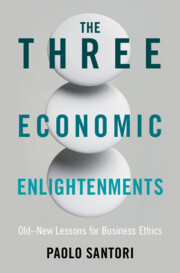Refine search
Actions for selected content:
160 results
3 - Materialities of Type
-
- Book:
- The Materiality of Literature
- Published online:
- 19 December 2025
- Print publication:
- 22 January 2026, pp 77-115
-
- Chapter
-
- You have access
- Open access
- HTML
- Export citation
4 - A Biography of I. Kant
-
- Book:
- The Materiality of Literature
- Published online:
- 19 December 2025
- Print publication:
- 22 January 2026, pp 116-166
-
- Chapter
-
- You have access
- Open access
- HTML
- Export citation
Introduction: Literary Materiality and the Question of Authorship
-
- Book:
- The Materiality of Literature
- Published online:
- 19 December 2025
- Print publication:
- 22 January 2026, pp 1-20
-
- Chapter
-
- You have access
- Open access
- HTML
- Export citation
2 - From Paratexts to Print Machinery
-
- Book:
- The Materiality of Literature
- Published online:
- 19 December 2025
- Print publication:
- 22 January 2026, pp 52-76
-
- Chapter
-
- You have access
- Open access
- HTML
- Export citation
1 - Two Ways of Looking at a Printed Book
-
- Book:
- The Materiality of Literature
- Published online:
- 19 December 2025
- Print publication:
- 22 January 2026, pp 21-51
-
- Chapter
-
- You have access
- Open access
- HTML
- Export citation
Conclusion
-
- Book:
- The Materiality of Literature
- Published online:
- 19 December 2025
- Print publication:
- 22 January 2026, pp 167-186
-
- Chapter
-
- You have access
- Open access
- HTML
- Export citation
Realism and European Political Integration: The Lessons of the United States
- Part of
-
- Journal:
- European Political Science / Volume 4 / Issue 2 / June 2005
- Published online by Cambridge University Press:
- 01 January 2026, pp. 199-208
-
- Article
- Export citation

The Materiality of Literature
- Rereading Authorship and Copyright with Kant
-
- Published online:
- 19 December 2025
- Print publication:
- 22 January 2026
-
- Book
-
- You have access
- Open access
- Export citation
Federalism and the Unity of Early Liberalism: Bentham’s and Kant’s Reception of Adam Smith’s “New Imperialism”
-
- Journal:
- Social Philosophy and Policy / Volume 42 / Issue 2 / Winter 2025
- Published online by Cambridge University Press:
- 16 December 2025, pp. 474-494
- Print publication:
- Winter 2025
-
- Article
-
- You have access
- Open access
- HTML
- Export citation
5 - Moral Imagination
-
- Book:
- Moral Imagination in the Twenty-first Century
- Published online:
- 30 October 2025
- Print publication:
- 13 November 2025, pp 97-123
-
- Chapter
- Export citation
3 - Social Constructivism and the Very Idea of a Conceptual Scheme
-
- Book:
- Moral Imagination in the Twenty-first Century
- Published online:
- 30 October 2025
- Print publication:
- 13 November 2025, pp 56-83
-
- Chapter
- Export citation
2 - Genovesi, Kant, and Smith
- from Part I - Political Economy, Civil Economy, Moral Economy
-
- Book:
- The Three Economic Enlightenments
- Published online:
- 04 November 2025
- Print publication:
- 13 November 2025, pp 23-72
-
- Chapter
- Export citation

The Three Economic Enlightenments
- Old–New Lessons for Business Ethics
-
- Published online:
- 04 November 2025
- Print publication:
- 13 November 2025

Kant and Environmental Philosophy
- The Climate Crisis and the Imperative of Sustainability
-
- Published online:
- 01 November 2025
- Print publication:
- 20 November 2025
Chapter 1 - Fichte
- from Part I - Post-Kantian German Idealism
-
- Book:
- Modern Moral Philosophy in the Nineteenth Century
- Published online:
- 15 November 2025
- Print publication:
- 30 October 2025, pp 11-57
-
- Chapter
- Export citation
Chapter 2 - Hegel
- from Part I - Post-Kantian German Idealism
-
- Book:
- Modern Moral Philosophy in the Nineteenth Century
- Published online:
- 15 November 2025
- Print publication:
- 30 October 2025, pp 58-96
-
- Chapter
- Export citation
Chapter 1 - Thought Experiments as Tools of Cognition
- from Part I - The Origins of “Thought Experiment” in Kant and Ørsted
-
- Book:
- Kierkegaard and the Structure of Imagination
- Published online:
- 26 September 2025
- Print publication:
- 16 October 2025, pp 23-34
-
- Chapter
- Export citation
Preface
-
- Book:
- Kant and the Supposed Right to Lie
- Published online:
- 18 July 2025
- Print publication:
- 28 August 2025, pp xi-xvii
-
- Chapter
- Export citation
Chapter IX - Luck and the Imputation of Harm
-
- Book:
- Kant and the Supposed Right to Lie
- Published online:
- 18 July 2025
- Print publication:
- 28 August 2025, pp 159-174
-
- Chapter
- Export citation
Chapter II - Kant’s Duties of Truthfulness
-
- Book:
- Kant and the Supposed Right to Lie
- Published online:
- 18 July 2025
- Print publication:
- 28 August 2025, pp 14-38
-
- Chapter
- Export citation
